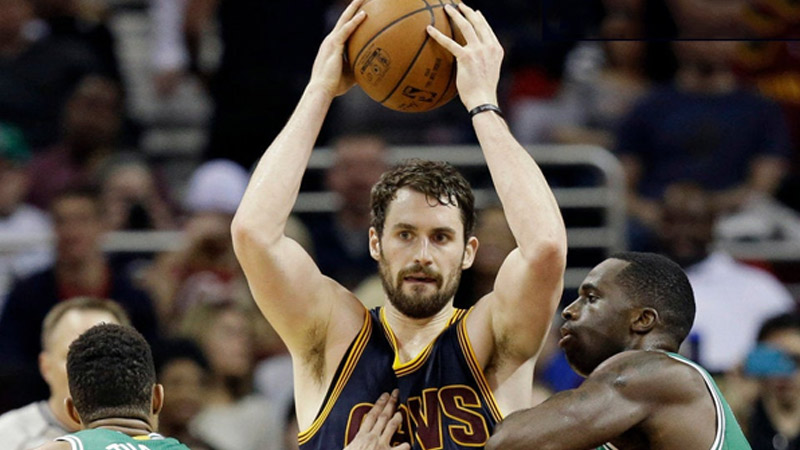In the dynamic game of basketball, passing is a fundamental skill that facilitates ball movement, creates scoring opportunities, and fosters team chemistry.
Among the various passing techniques, the overhead pass stands out as a versatile and effective method to deliver the ball accurately over defenders.
In this article, we will explore the intricacies of the overhead pass, and its applications in different game situations, provide detailed instructions on executing this pass with precision, and analyze its advantages and disadvantages.
We will also highlight common mistakes to avoid, and ultimately equip you with the knowledge to master this essential basketball skill. Let’s get started.
What Is the Overhead Pass in Basketball?
The overhead pass, often referred to as the two-hand chest pass, is a fundamental passing technique used in basketball. It involves using both hands to propel the basketball directly from the chest level, with a slight arc, towards the intended recipient.
The primary purpose of the overhead pass is to facilitate quick and accurate ball movement across the court, allowing players to effectively distribute the ball to their teammates and create scoring opportunities.
One of the distinguishing features of the overhead pass is its simplicity. It is a basic pass that can be easily executed by players of all skill levels.
By utilizing both hands, players can generate more power and control over the pass, making it an efficient way to move the ball over longer distances.
The overhead pass also allows for a quick release, enabling players to deliver the ball swiftly and accurately to their intended targets.
When Do Players Need to Use an Overhead Pass in Basketball?

Check out the following part to get some idea of the player’s need to use an overhead pass in basketball.
Fast Breaks
During fast break situations, where players are looking to advance the ball quickly up the court, the overhead pass allows for swift and accurate ball movement to teammates in advantageous positions.
Against Defensive Pressure
When faced with aggressive defensive pressure, especially trapping or denying passing lanes, the overhead pass can help bypass defenders and create passing angles to maintain possession.
Feeding the Post
The overhead pass is particularly useful when feeding the ball to a teammate in the low post. It allows for a quick and high release, making it difficult for defenders to disrupt the pass or anticipate the intended target.
Skip Passes
Skip passes involve passing the ball from one side of the court to the other, over the defense. The overhead pass’s ability to generate velocity and arc makes it ideal for executing accurate skip passes.
Outlet Passes
After securing a rebound, the overhead pass can efficiently initiate a fast break by quickly distributing the ball to a guard or a teammate ahead of the pack.
How to Throw an Overhead Pass?

Source: nytimes.com
Here the way to throw an overhead pass will be discussed in the following section.
Hand Placement
To initiate the overhead pass, it is crucial to have proper hand placement on the basketball. Begin by positioning your hands on opposite sides of the ball, with your fingers spread evenly for enhanced control and stability.
This hand positioning allows you to have a firm grip on the ball and maintain control throughout the pass.
Triple Threat Position
Before executing the overhead pass, assume the triple threat position. This stance involves slightly bending your knees, keeping your feet shoulder-width apart, and having your eyes actively surveying the court for potential passing options.
The triple threat position provides balance, stability, and the ability to quickly transition into a shot or dribble if the pass isn’t available.
Arm Extension
As you prepare to release the ball, extend your arms fully while keeping your elbows slightly bent. This extension generates power and control in the pass, allowing you to propel the ball with speed and accuracy.
It is essential to have a strong and fluid arm extension to maximize the effectiveness of the overhead pass.
Chest-Level Release
The release of the ball is a critical aspect of the overhead pass. To execute the pass effectively, release the ball from your chest level using both hands simultaneously.
Aim to pass the ball with a slight arc, which provides accuracy and elevation to bypass defenders. The arc helps ensure that the pass clears any outstretched arms or defensive obstacles, allowing your intended recipient to receive the ball cleanly.
Follow-Through
Completing the overhead pass requires a proper follow-through. After releasing the ball, extend your arms fully toward the intended target, maintaining proper wrist and finger alignment.
This follow-through motion enhances the accuracy and control of the pass. It also serves as a visual cue to your teammates, indicating the direction and trajectory of the pass.
By following these steps and practicing the overhead pass consistently, you can develop the necessary technique, power, and precision to effectively execute this fundamental basketball skill.
Remember to focus on hand placement, assume the triple threat position, extend your arms, release the ball from chest level with a slight arc, and complete the pass with strong follow-through.
Advantages or Disadvantages of Throwing an Overhead Pass?
The advantages of throwing an overhead pass are discussed in the following section.
Speed and Accuracy
The overhead pass allows for quick and precise ball movement, facilitating efficient offensive play.
Bypassing Defenders
Its trajectory and velocity help the ball travel over or around defenders, reducing the risk of turnovers.
Versatility
The overhead pass can be utilized in various game situations, making it a versatile passing technique.
The disadvantages of throwing an overhead pass are discussed in the following section.
Predictability
Over-reliance on the overhead pass can make a player’s passing intentions predictable, leading to interceptions or deflections by alert defenders.
Limited in Tight Spaces
In congested areas or when faced with intense defensive pressure, the overhead pass may not be the most suitable option due to its higher likelihood of being deflected or stolen.
Common Mistakes to Avoid While Throwing an Overhead Pass
The possible common mistakes to avoid while throwing an overhead pass are in the following section.
Lack of Proper Timing
Timing is crucial when executing an overhead pass. Failing to release the ball at the right moment can disrupt the flow of the offense and allow defenders to close passing lanes.
It’s essential to recognize when the intended recipient is ready to receive the pass and make the delivery at that precise moment. A mistimed overhead pass can lead to deflections, turnovers, or missed scoring opportunities.
Insufficient Power
To ensure the overhead pass reaches its intended target accurately and swiftly, sufficient power must be generated.
The inadequate force behind the pass can result in a slow delivery, giving defenders more time to react and potentially intercept the ball.
It’s important to generate power from the legs and core while extending the arms fully to generate the necessary velocity for a successful overhead pass.
Poor Ball Control
Proper hand placement and a secure grip on the ball are essential for executing an accurate overhead pass. Improper hand placement or a weak grip can lead to inaccurate passes or even turnovers.
Players should ensure their hands are spread evenly on the ball, fingers spread for better control, and a firm grip to maintain control throughout the passing motion.
Neglecting Proper Footwork
Solid footwork is essential for stability and balance while executing an overhead pass. Neglecting this aspect can affect the accuracy and effectiveness of the pass.
Players should establish a strong base with their feet shoulder-width apart, knees slightly bent, and maintain proper balance throughout the passing motion.
Proper footwork ensures stability and allows for better transfer of power from the lower body to generate a strong and accurate overhead pass.
Failure to Read Defenses
A critical aspect of executing successful overhead passes is the ability to read and assess defensive positioning and movement. Not properly evaluating the defense can lead to ill-advised overhead passes, resulting in turnovers.
It’s crucial to identify open passing lanes, anticipate defensive rotations, and make quick decisions based on the defensive positioning to ensure the pass reaches its intended target safely.
FAQs
Can the overhead pass be used in both half-court and full-court situations?
Yes, the overhead pass is effective in both half-court and full-court situations. Its versatility allows for accurate and swift ball movement in various game scenarios.
Are there any height or age limitations to effectively execute an overhead pass?
No, the overhead pass can be executed by players of all heights and ages. It is a fundamental passing technique that can be developed and mastered with practice.
Are there any alternative passes to consider instead of the overhead pass?
Yes, basketball offers a range of passing techniques, including the bounce pass, chest pass, and one-handed skip pass. Each pass has its own advantages and applications in different game situations.
Can the overhead pass be used in a pick-and-roll situation?
Yes, the overhead pass can be utilized in pick-and-roll scenarios. It allows the ball handler to quickly deliver the ball to the rolling player, bypassing the defense.
What are some drills to improve overhead pass accuracy and speed?
Drills such as partner passing, target passing, and passing against defensive pressure can enhance overhead pass accuracy, speed, and decision-making abilities.
Bottom Line
The overhead pass is a fundamental and versatile passing technique in basketball. It enables players to swiftly and accurately move the ball while bypassing defenders.
Mastering the overhead pass requires proper technique, timing, and an understanding of defensive positioning.
By incorporating this skill into your game, you can enhance ball movement, create scoring opportunities, and contribute to your team’s success.
Practice diligently, study game situations, and refine your overhead pass execution to become a proficient passer and elevate your overall performance on the basketball court. Best wishes.







